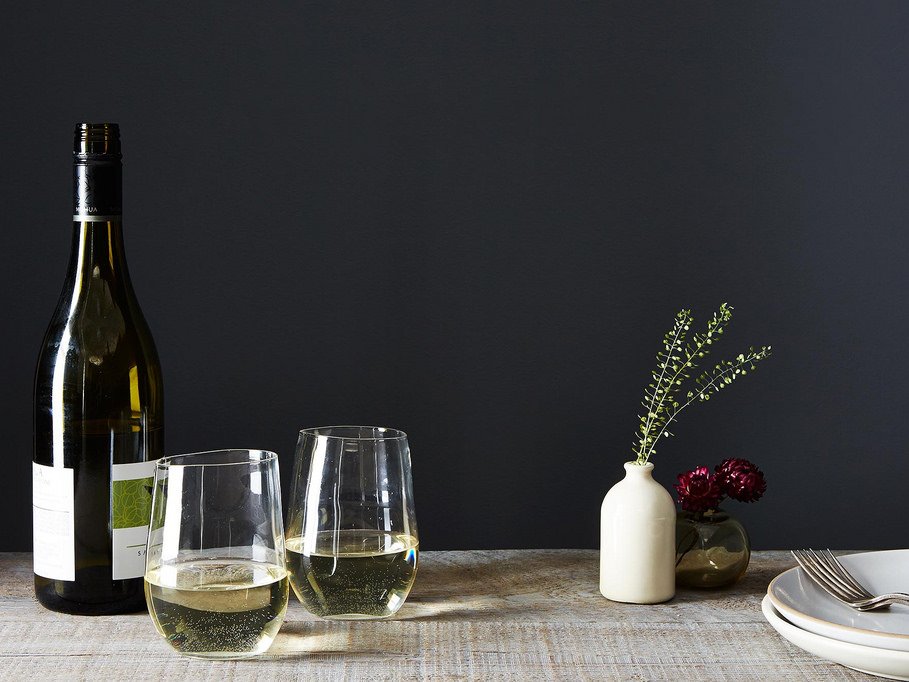Franchising, retail, business

30/05/2015
Like many other people living in New York, I love wine.
I'm on a first-name basis with the man who runs my corner wine shop and, let's be honest, the friendly people at my local Trader Joe's.
But I'll admit that I don't know a lot about wine.
While I could garner enough to understand the differences between basic grape varietals and regions—thanks to that wine tasting class I took in college—I definitely have a lot more to learn.
(Let's just say that I treated that class less like a learning experience and more like a party.)
Recently, I was given the opportunity to atone for my 21-year-old self when Food52 invited Brian Larky, the founder of Italian wine importer Dalla Terra, to show us some of his favorite Italian wines and answer all of our questions. And we had a lot of questions:
"I know you're not a doctor, but why does old red wine—but not old white wine—give me heartburn?"
"If I prefer wines with screw caps, does that make me a bad person?"
"Why does this wine taste funny?"
We had so many questions, we almost forgot to drink wine—almost. Here are some of my favorite takeaways from the tasting:
1. "Napa is boring."
At least that's what Brian says, even though he lives and works there. According to him, almost every distributor in the country is in Napa since it's considered the wine capital of the United States. But the land there can't support the vast number of varietals that countries like France and Italy do.
While yes, the Chardonnay, Cabernet Sauvignon, and Merlot that comes out of Napa is delicious, Brian says "it's like having ten words in your vocabulary versus six-hundred." (Those 10 words just happen to be really, really great words.)
2. Terroir is important when it comes to a wine's quality and history.
Roughly translated as a "sense of place," terroir refers to the qualities that are imparted to a wine by the location—and the geology, geography, and climate—in which its grapes were grown.
While terroir is sometimes masked by processes like oak aging, maceration, and fermentation, many say that it is a set of characteristics that tells the story of the farmers and land that produced it.
3. The wine import/export business directly affects you.
When you're weighing the merits of a $40 Shiraz, consider this: That bottle has already been purchased two or three times before you've laid eyes on it. You need to go all the way back to the winery to explain the price to the consumer.
The first time a bottle of wine is sold, it's sold directly from the vineyard to an importer for, say, $12. The importer then ships it to the United States (or whichever country it's headed to), where it's then sold to a distributor—at which point that same bottle might cost $20. The distributor then sells the bottle to a retailer at a wholesale cost, for around $28, at which point it's sold to you for $40. Moral of the story? For the best deal, try to buy wine earlier along the line. If you don't live close to a vineyard (we should all be so lucky), look up wholesalers in your area—then buy a case.
4. People drink rotten wine—all the time.
In the industry, drinking rotten wine is referred to as drinking from a "corked" bottle—which happens more often than you'd think. Brian said that 8% of all wines are corked, and 75% of those are never caught. Wines become 'corked' when the chlorine—the chemical often used to sterilize the cork before it's put in the bottle—seeps into the liquid and 'turns it.' To identify a corked wine, look out for mustiness or bubbles.
5. On a related note, screw caps are (arguably) better than corks.
As far as I was concerned, in college, there were two variations of wine: cheap and cheaper. I learned to differentiate the cheaper wines by their telltale screwcaps (bonus points that I didn't have to go hunting for a bottle opener, or a shoe, to open it).
But I don't have to live in shame anymore: As it turns out, the method used to cap a bottle isn't any indication of a wine's quality; screwcaps can actually be more effective in maintaining it. As Brian put it, "I love screwcaps!"
6. If you don't like a wine, say something.
The other evening, I witnessed something I'd never seen before: When my dining partner ordered a bottle of wine at a nice restaurant, the sommelier poured a taste into her glass. After considering the wine, my dining partner did what I thought was the unthinkable—she sent it back. I was astonished: I had always assumed that once a restaurant opens a bottle of wine, the unspoken rule is that you grin and bear it, whether you like it or not. After all, they went to the effort of opening it. Not so: Brian explained that if you don't like wine, you should never feel pressured to drink it, including if it's from a wine shop.
Remember the chain of command? When you return a wine to the store you purchased it from, you're not ripping them off. The wine store will often just tell their wine representative about the bad bottle and return it for the wholesale price.
But even if you forget all that, remember these two things if you partake in a wine tasting: Drink a lot of different things and remember what you drank.